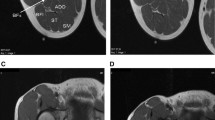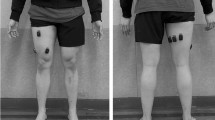Abstract
Background/Objectives: The purpose of this experiment is to find out the degree of improvement by clarifying the effects of squats after attaching them to EMS through the functions of the body, such as muscle strength, jumping, and muscle endurance. Methods: The participants were divided into EMS squat group (ESG), squat group (SG), and control group (CoN) without squat exercise, and measured all subjects. Squat exercise was performed at 90° knee flexion with broad legs and straightened waist. Using ultrasonography, we measured the thickness of vastus intermedius (IM), rectus femoris (RF), vastus medialis (VM), vastus lateralis (VL), rectus abdominis (RA), external abdominal oblique (EO), internal abdominal oblique (IO), and transverse abdominis (TrA). And we measured jump, height, endurance, and agility. Findings: Squat movement applied with EMS improved jump, endurance, and agility, and increased the thickness of quadriceps muscle except VL, VM, and abdominal muscle, except TrA. However, we found that in endurance, there is not much difference from squat exercise. Improvements: There was a time constraint because the study was conducted for a short period, and the study was limited due to the occurrence of the elimination due to the strength of exercise.
Access this chapter
Tax calculation will be finalised at checkout
Purchases are for personal use only
Similar content being viewed by others
References
Suqisaki, N., Kurokawa, S., Okada, J., Kanehisa, H.: Difference in the recruitment of hip and knee muscles between back squat and plyometric squat jump. PLoS ONE 9(6), e101203 (2014). https://doi.org/10.1371/journal.pone.0101203
Cotter, J.A., Chaudhari, A.M., Jamison, S.T., Devor, S.T.: Knee joint kinetics in relation to commonly prescribed squat loads and depths. J. Str. Condition. Res. 27(7), 1765–1774 (2013). https://doi.org/10.1519/JSC.0b013e3182773319
Bonnet, V., Mazza, C., Fraisde, P., Cappozzo, A.: Real-time estimate of body kinematics during a planar squat task using a single internal measurement unit. IEEE Trans. Biomed. Eng. 60(7), 1920–1926 (2013). https://doi.org/10.1109/TBME.2013.2245131
Wu, H.W., Tsai, C.F., Liang, K.H., Chang, Y.W.: Effect of loading devices on muscle activation in squat and lunge. J. Sport Rehabil. 6, 1–6 (2019). https://doi.org/10.1123/jsr.2018-0182
Nicolas, W., Christoph, Z., Ulrike, D., Heinz, K., Joachim, M.: Effects of loaded squat exercise with and without application of superimposed EMS on physical performance. J. Sports Sci. Med. 15(1), 26–33 (2016)
Doheny, E.P., Caulfield, B.M., Minogue, C.M., Lowery, M.M.: The effect of subcutaneous fat thickness on the efficacy of transcutaneous electrical stimulation. IEEE Eng. Med. Biol. Soc. 5684–5687 (2008). https://doi.org/10.1109/iembs.2008.4650504
Kemmler, W., Von Stengel, S., Schwarz, J., Mayhew, J.L.: Effect of whole-body electromyostimulation on energy expenditure during exercise. J. Str. Condition. Res. 26(1), 240–245 (2012). https://doi.org/10.1519/JSC.0b013e31821a3a11
Micke, F., Kleinoder, H., Dormann, U., Wirtz, N., Donath, L.: Effects of an eight-week superimposed submaximal dynamic whole-body electromyostimulation training on strength and power parameters of the leg muscles: a randomized controlled intervention study. Front. Phys. 5(9):1719 (2018). https://doi.org/10.3389/fphys.2018.01719.eCollection
Wirtz, N., Wahl, P., Kleinoder, H., Wechsler, Achtzehn, S., Mester, J.: Acute metabolic, hormonal, and psychological responses to strength training with superimposed EMS at the beginning and the end of a 6 week training period. J. Musculoskelet Neur. Inter. 15(4): 325–32 (2015)
Wolfgang, K., Anja, W., Sebastia, W., Mahdieh, S., Simon von, S., Andre, F., et al.: Efficacy and safety of low frequency whole-body electromyostimulation (WB-EMS) to improve health-related outcomes in non-athletic adults. a systematic review. Front. Phys. 9:573 (2018). Doi: 10.3389/ fphys.2018.00573
Carrie, W.H., Aubrey, D.S., Colleen, F.H., Bridgette, D.G., Molly, F.P., Barri, L.S., et al.: The efficacy of an eight-week core stabilization program on core muscle function and endurance: a randomized trial. Int. J. Sports phys. Ther. 11(4), 507–519 (2016)
Filipovic, A., Grau, M., Kleinoder, H., Zimmer, P., Hollmann, W., Bloch, W.: Effects of a whole-body electrostimulation program on strength, sprinting, jumping, and kicking capacity in elite soccer players. J. Sports Sci. Med. 15(4), 639–648 (2016)
Park, J.H., Seo, K.S., Lee, S.U.: Effect of superimposed electromyostimulation on back extensor strengthening: A pilot study. J. Str. Condition. Res. 30(9), 2470–2475 (2016). https://doi.org/10.1519/JSC.0000000000001360
Falavigna, L.F., Silva, M.G., Freitas, A.L., Silva, P.F., Paiva Junior, M.D., De Castro, C.M., et al.: Effects of electrical muscle stimulation early in the quadriceps and tibialis anterior muscle of critically ill patients. Physiother. Theory Pract. 30(4), 223–228 (2014). https://doi.org/10.3109/09593985.2013.869773. Epub 2013 Dec 30
Cho, M.S.: The effects of modified wall squat exercises on average adults’ deep abdominal muscle thickness and lumbar stability. J. Phys. Ther. Sci. 25(6), 689–692 (2013)
Thomas, L.J., Markus, D.J., Lars, L.A., Henrik, H., Henrik, K., Thomas, B., et al.: Quadriceps muscle activity during commonly used strength training exercises shortly after total knee arthroplasty: implications for home-based exercise-selection. J. Experim. Orthopaedics 6(1), 29 (2019). https://doi.org/10.1186/s40634-019-0193-5
Tsuzuku, S., Kajioka, T., Sakakibara, H., Shimaoka, K.: Slow movement resistance training using body weight improves muscle mass in the elderly: a randomized controlled trial. Scand. J. Med. Sci. Sports 28(4), 1339–1344 (2018). https://doi.org/10.1111/sms.13039. Epub 2018 Jan 30
Fukutani, A., Takei, S., Hirata, K., Miyamoto, N., Kanehisa, H., Kawakami, Y.: Influence of the intensity of squat exercises on the subsequent jump performance. J. Str. Condition. Res. 28(8), 2236–2243 (2014). https://doi.org/10.1519/JSC.0000000000000409
Chelly, M.S., Fathloun, M., Cherif, N., Amar, M.B., Tabka, Z., Van Praagh, E., et al.: The effects of modified wall squat exercises on average adults’ deep abdominal muscle thickness and lumbar stability. J. Str. Condition. Res. 23(8), 2241–2249 (2009). https://doi.org/10.1519/JSC.0b013e3181b86c40
Martinez, L.E.J., Benito, M.E., Hita, C.F., Lara, S.A., Martinez, A.A.: Effects of electrostimulation and plyometric training program combination on jump height in teenage athletes. J. Sports Sci. Med. 11(4), 727–735 (2012)
Loturco, I., Pereira, L.A., Moraes, J.E., Kitamura, K., Cal Abad, C.C., Kobal, R., et al.: Jump-squat and half-squat exercises: selective influences on speed-power performance of elite rugby sevens players. PLoS ONE 12(1), e0170627 (2017). https://doi.org/10.1371/journal.pone.0170627
Chaouachi, A., Brughelli, M., Chamari, K., Levin, G., Abdelkrim, N.B., Laurencelle, L., Castagna, C.: Lower limb maximal dynamic strength and agility determinants in elite basketball players. J. Str. Condition. Res. 23(5), 1570–1577 (2019). https://doi.org/10.1519/JSC.0b013e3181a4e7f0
Wang, R., Hoffman, J.R., Tanigawa, S., Miramonti, A.A., La Monica, M.B., Beyer, K.S., et al.: Isometric mid-thigh pull correlates with strength, sprint, and agility performance in collegiate rugby union players. J. Str. Condition. Res. 30(11), 3051–3056 (2016). https://doi.org/10.1519/JSC.0000000000001416
Jullien, H., Bisch, C., Largouet, N., Manouvrier, C., Carling, C.J., Amiard, V., et al.: Does a short period of lower limb strength training improve performance in field-based tests of running and agility in young professional soccer players? J. Str. Condition. Res. 22(2), 404–411 (2008). https://doi.org/10.1519/JSC.0b013e31816601e5
Marian, V., Katarina, L., David, O., Matus, K., Simon, W.: Improved maximum strength, vertical jump and sprint performance after 8 weeks of jump squat training with individualized loads. J. Sports Sci. Med. 15(3), 492–500 (2016)
Author information
Authors and Affiliations
Corresponding author
Editor information
Editors and Affiliations
Rights and permissions
Copyright information
© 2021 Springer Nature Singapore Pte Ltd.
About this chapter
Cite this chapter
Han, Hi. et al. (2021). Effects of Squats Exercise with EMS on Muscle Strength, Endurance, and Body Function. In: Bhoi, A., Mallick, P., Liu, CM., Balas, V. (eds) Bio-inspired Neurocomputing. Studies in Computational Intelligence, vol 903. Springer, Singapore. https://doi.org/10.1007/978-981-15-5495-7_13
Download citation
DOI: https://doi.org/10.1007/978-981-15-5495-7_13
Published:
Publisher Name: Springer, Singapore
Print ISBN: 978-981-15-5494-0
Online ISBN: 978-981-15-5495-7
eBook Packages: Intelligent Technologies and RoboticsIntelligent Technologies and Robotics (R0)




